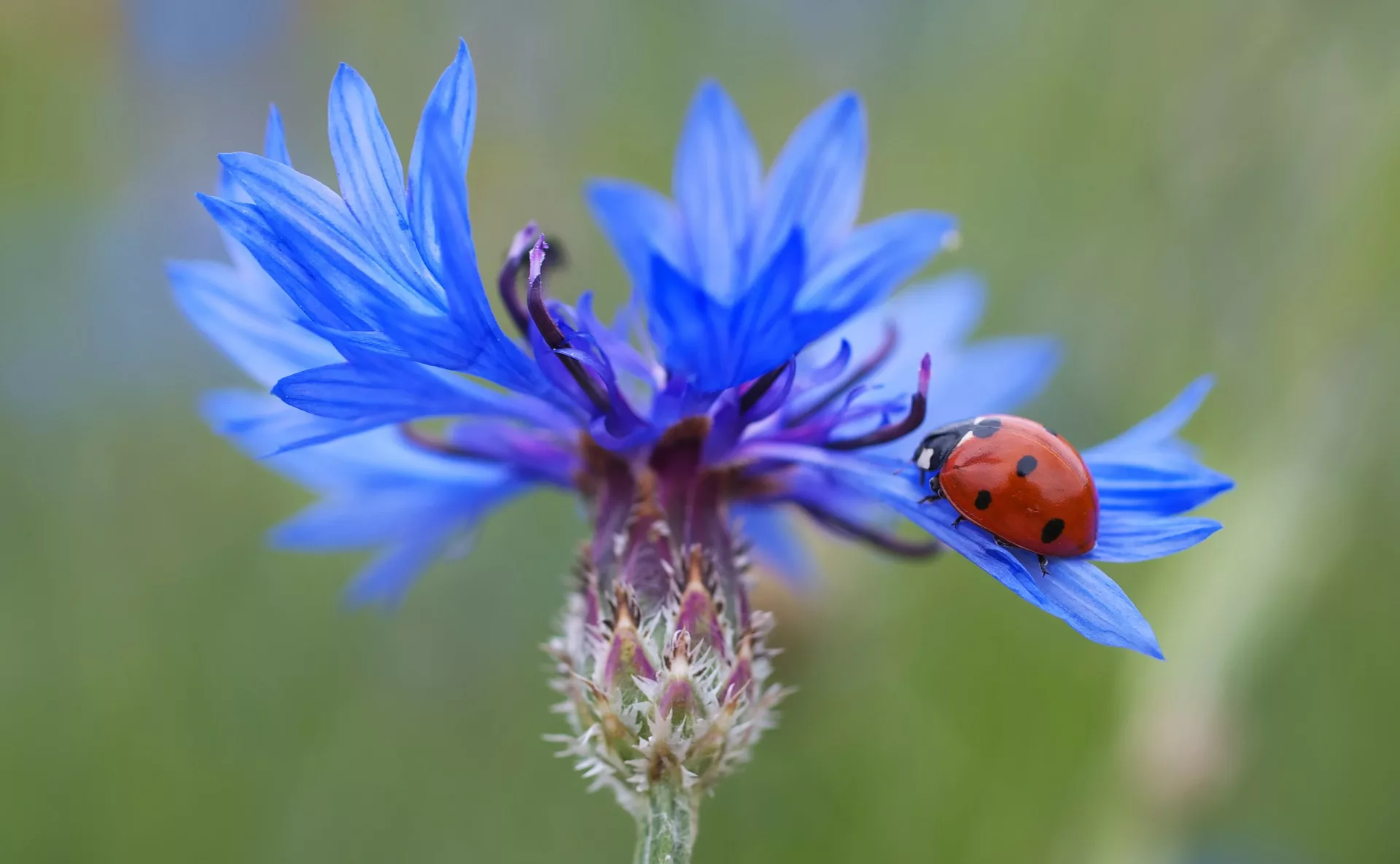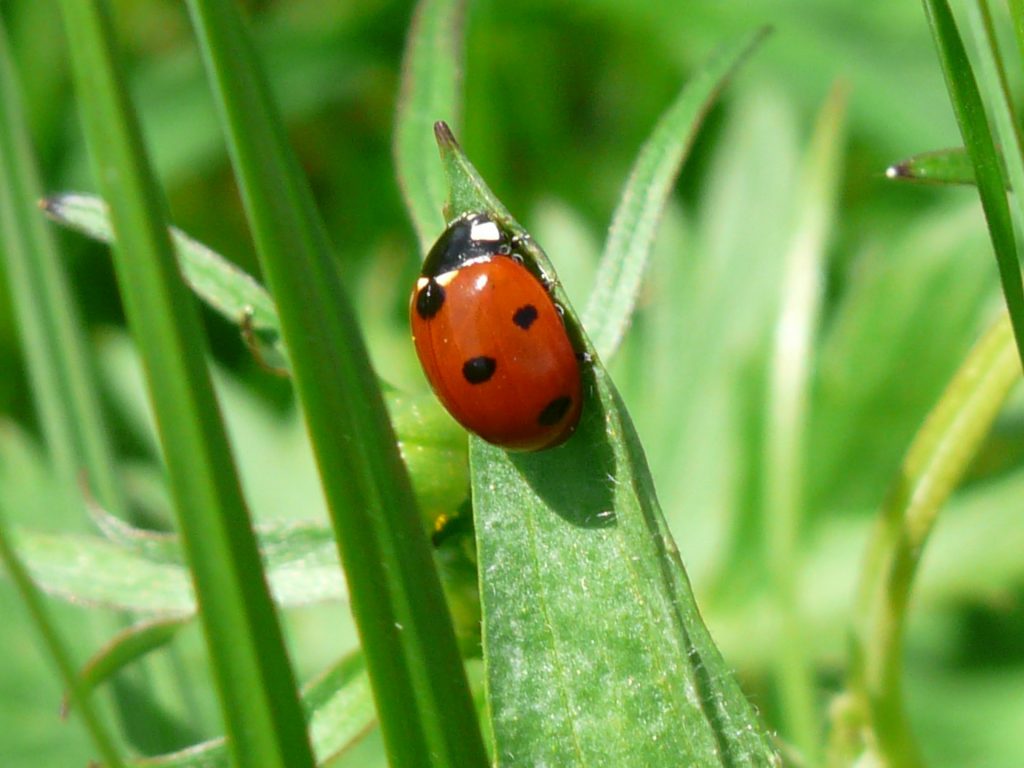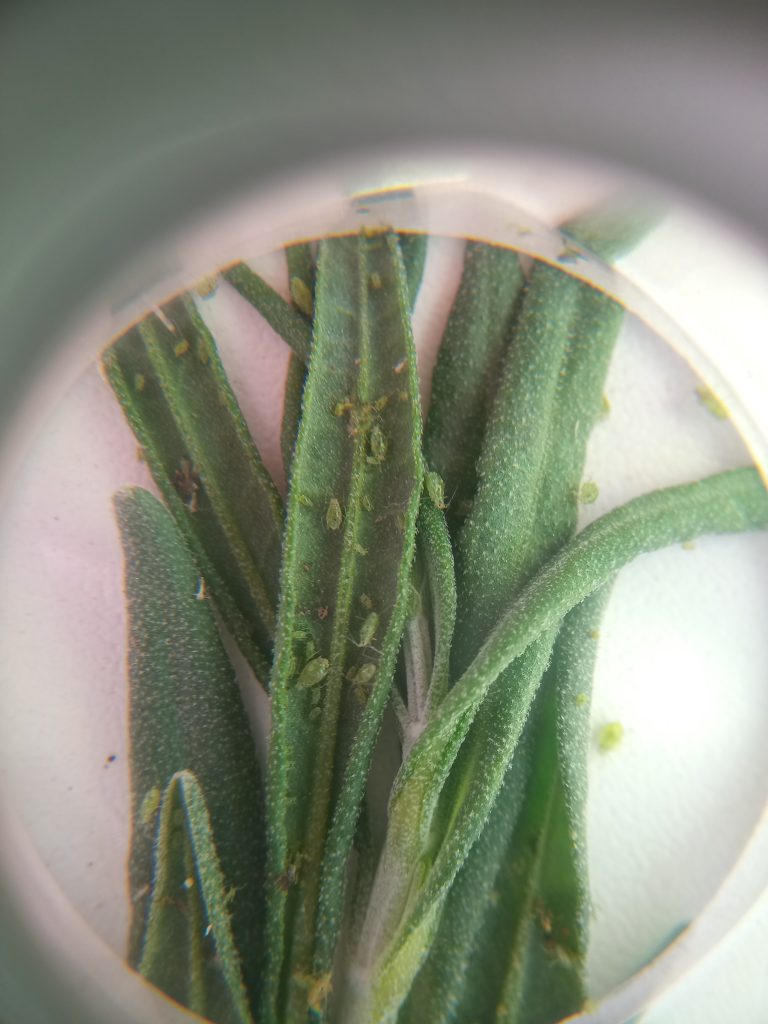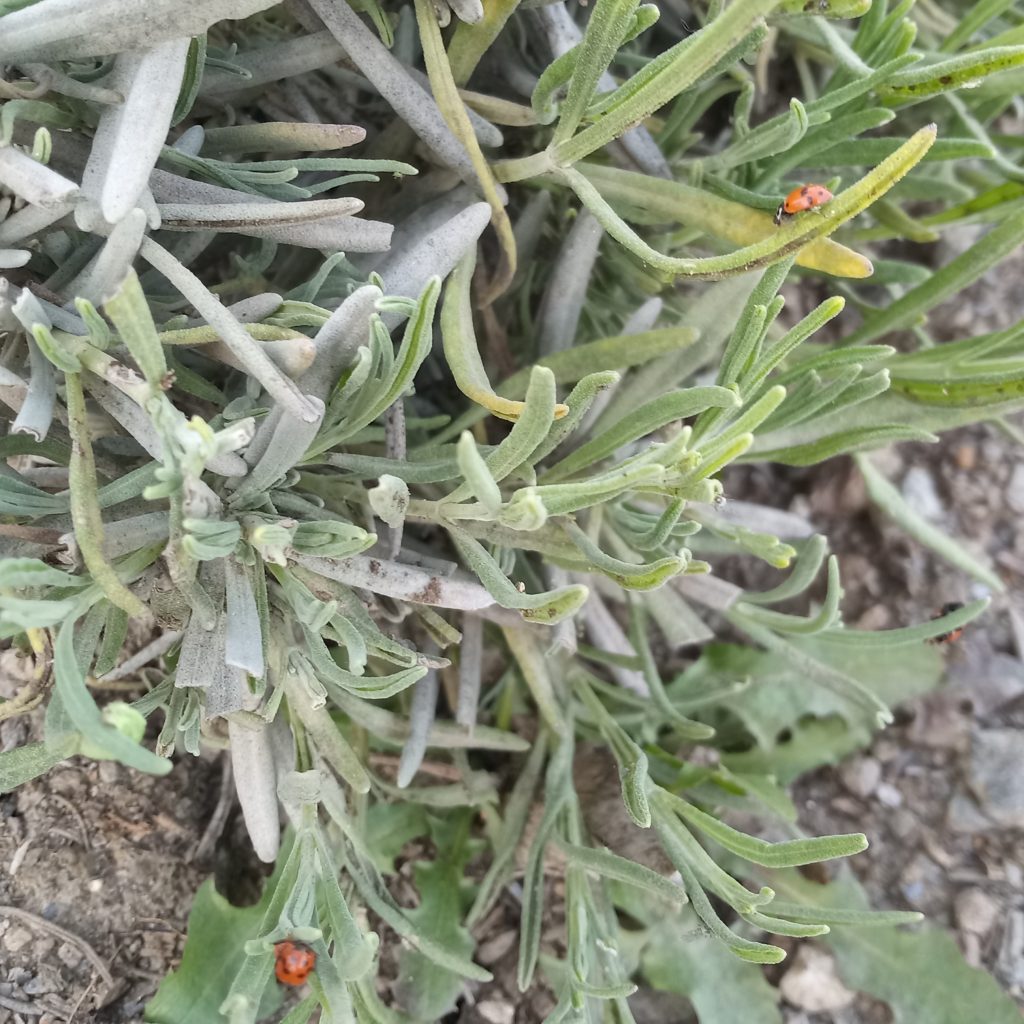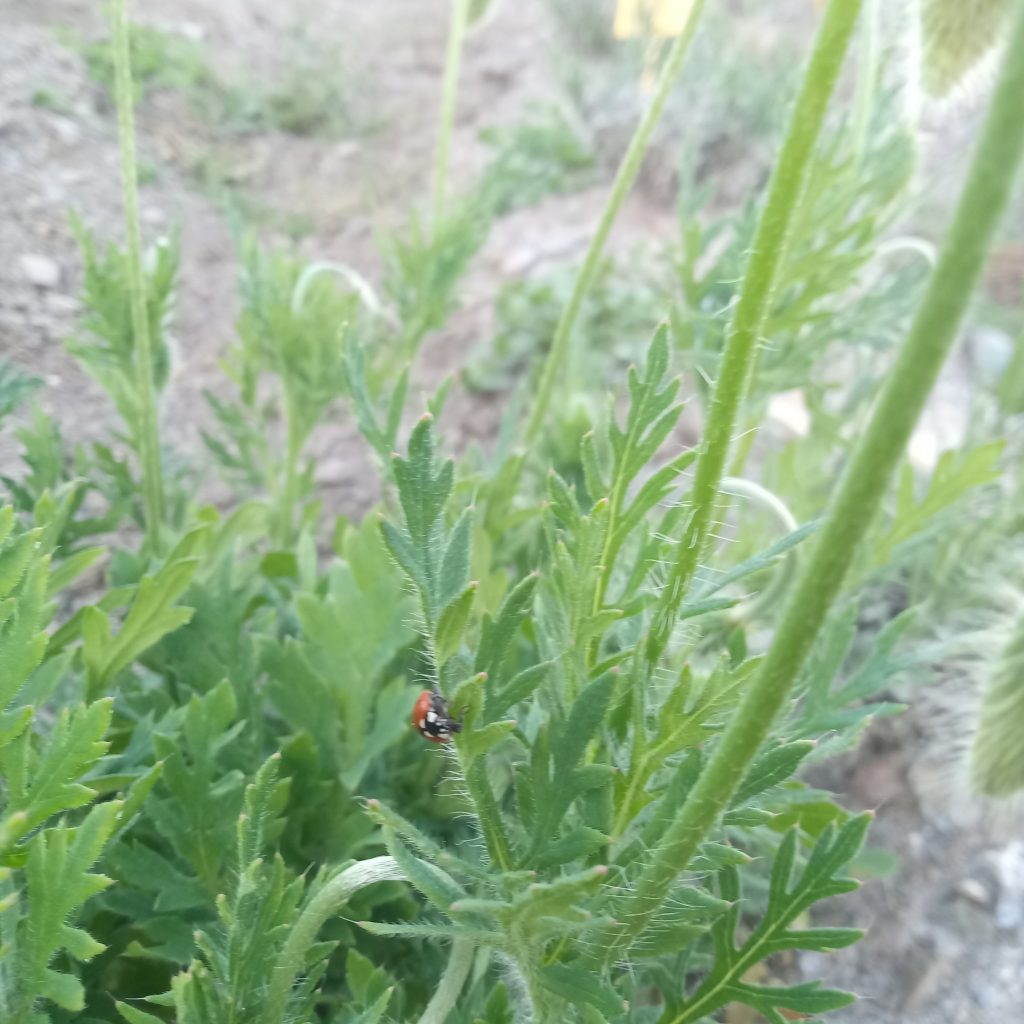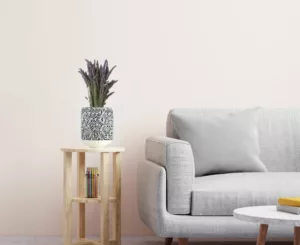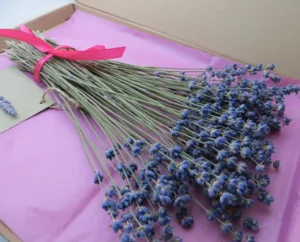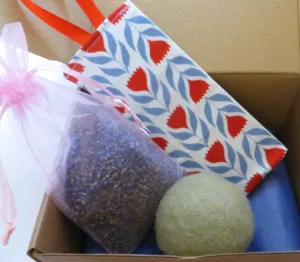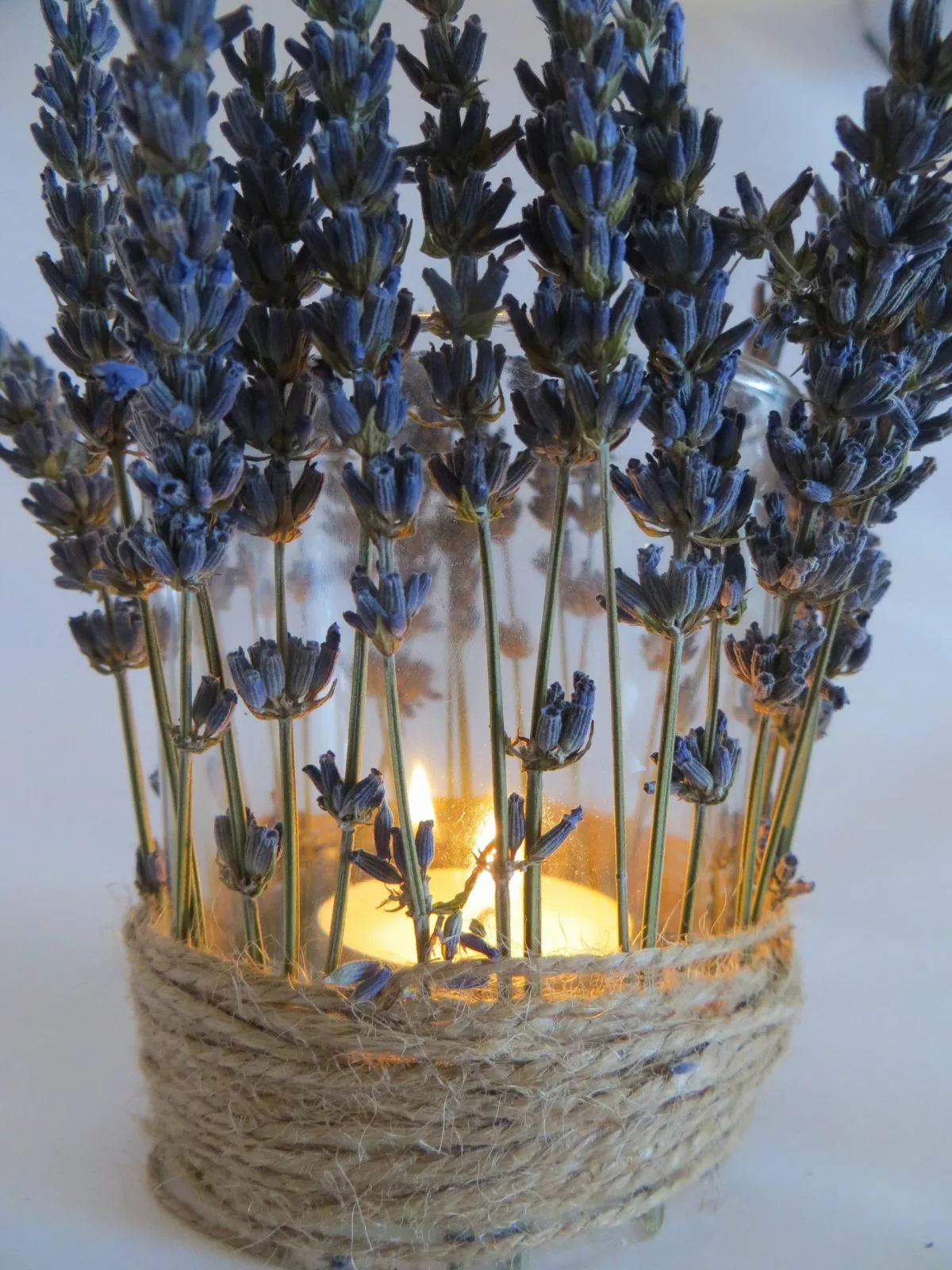Last spring, four lavender plants had aphids. I didn’t take it too seriously and that wasn’t a good idea. Within a short time, the plants were covered in aphids and ants were coming and going. The plants looked worse and worse. I knew they would survive, but I could forget about harvesting these plants for the time being.

Ladybird hero in the ecological lavender garden 
Aphid on lavender leaf under a magnifying glass
Pesticides, of course, are not an option in an ecological lavender garden. I bought ladybird larvae. But the poor larvae were immediately eaten by the ants, who were in no mood to give up their milk churns.
Be careful of imbalance in your ecological lavender garden
I had many ants on the land last year. I suspect because of the plastic. Black plastic was necessary to remove bindweed. That worked well as you can read in my blog about how to get rid of invasive weeds in ecological farming. Only along the edges do bindweed still pop up, but not inside the field. And that is good news, because otherwise it would have been impossible to plant lavender there. But the ants also liked the plastic, I think it was nice and warm. When I removed the plastic, I could see the ant pupae on top of the nest lying directly below it.
Ants do love lavender
The ants were not good for the lavender crop either. I always have to laugh when someone writes that lavender helps against ants. I think ants love lavender. I noticed that sometimes whole plants only had stalks and no flowers. I watched and saw how the ants carried whole flowers into their nests. They cut them off at the stem, the flower falls down and they drag the flower to their nest. I don’t know what they do with it, maybe they lull their babies to sleep with it. They clearly preferred the soothing lavandula angustfolia.
Tricks against aphids that didn’t really help
And those ants, of course, were very fond of the louse. So what do you do? What I should have done was prune the plant straight away so that not so many eggs could hatch. But I was late. Then I tried everything. From the poor bought baby ladybirds that were eaten straight away to planting African Marigolds between the affected lavenders, rinsing the leaves, peeling onions in between etc.
In the end, time and pruning helped the most. But the plants missed a whole harvest as a result, so I can’t keep doing that.
That is why I was not so happy when I had aphids again this spring. Now I don’t have 40 lavender plants, but almost 400. I immediately pruned the affected ones and of course cleared away all the leaves with eggs.
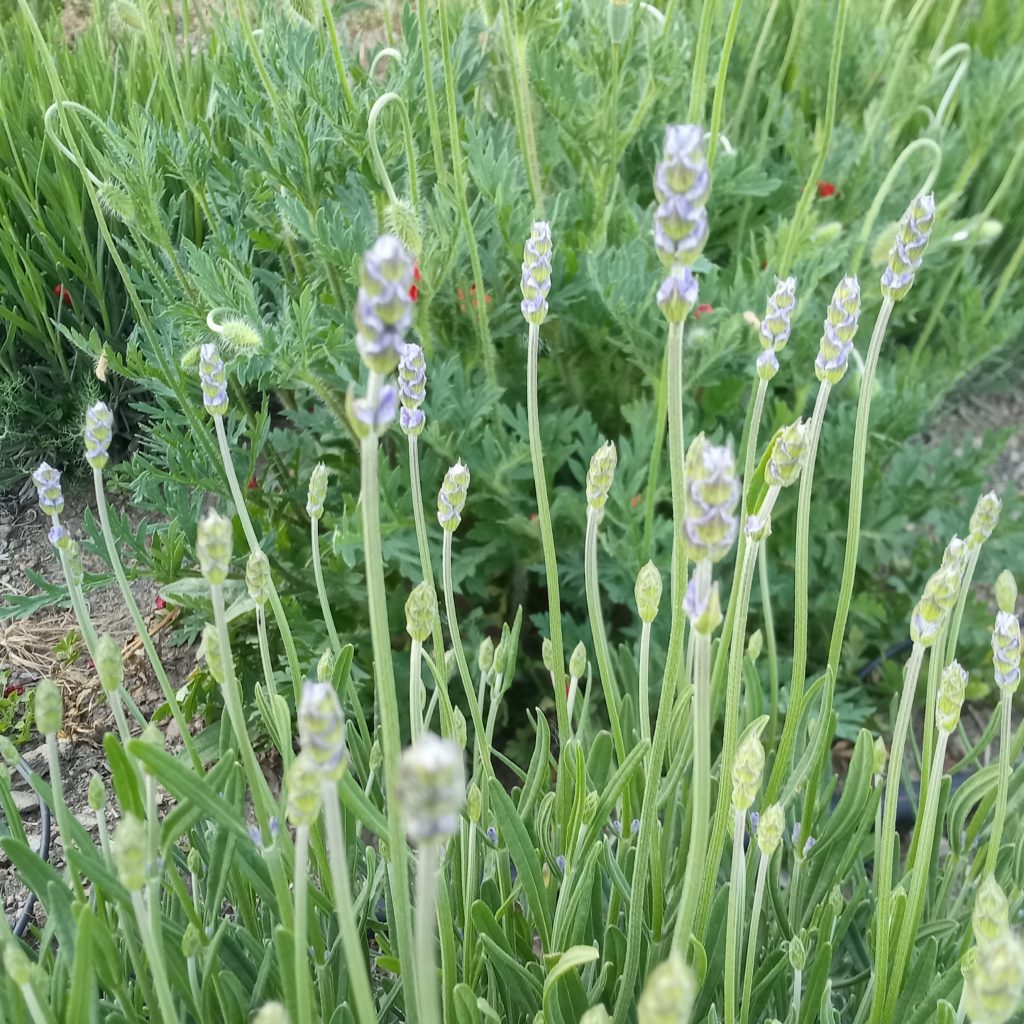
The only thing that really helps against aphids is biodiversity in the ecological lavender garden
There are far fewer ants this year, probably because the plastic has been gone for at least a year. And I already noticed that I have more ladybirds this year. In early spring they sat quietly among all the greenery and wildflowers around the lavender and this week they moved collectively to the lavender plants with aphids.

Ladybirds eating aphids on lavender 
Ladybird on poppy leaf
The aphids are no match for this superiority. The lavender plants look much better in just a week time. Moral of the story: nature recovers itself. No pesticides, lots of wild flowers and biodiversity. See the pictures of the wild flowers this spring in and around my lavender garden. And black plastic can help against extreme weeds like bindweed, but don’t use it longer than necessary. In an ecological lavender garden, nature is in balance.

